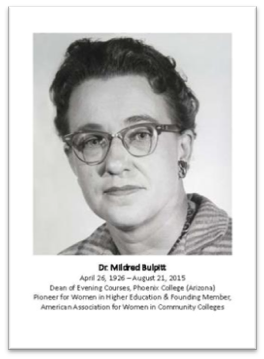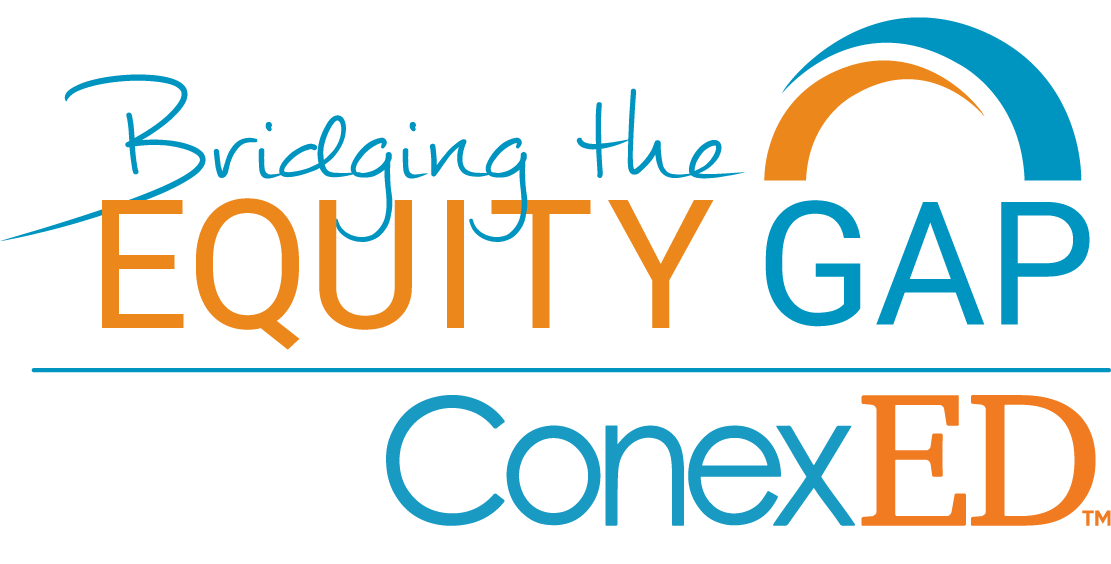American Association for Women in Community Colleges |
Historical Background of AAWCJC / AAWCC
 In the summer of 1973, an EPDA-funded workshop entitled "Woman: Her Challenge to the Community College" was held at the City College of San Francisco in California. The grant proposal was written and the project directed by Eileen Rossi (CCSF) and Jan Brandstrom (Lane Community College, OR).
In the summer of 1973, an EPDA-funded workshop entitled "Woman: Her Challenge to the Community College" was held at the City College of San Francisco in California. The grant proposal was written and the project directed by Eileen Rossi (CCSF) and Jan Brandstrom (Lane Community College, OR).
The project brought together women from four western states—Washington, Oregon, California, and Arizona—to learn about programs for women in community colleges. The workshop was an intensive one, lasting four weeks with a schedule that frequently ran from 9:00am to 9:00pm.
Near the end of the four-week workshop, the group decided that what its individual members had learned and shared was too valuable to end at the time the scheduled activities for the summer concluded. They decided to form an organization that would be called The American Association of Women in Community and Junior Colleges: Western Division and to investigate what would be involved in becoming a Council of AACJC.
Letters were sent out to hundreds of women in two-year institutions throughout the country asking them to join in starting the new organization since it was necessary to show national potential in order to justify requesting Council status. Between 1973 and February 1974, approximately 200 women in 21 states had sent dues and committed themselves, at least for a year, to the purposes of the organization.
AAWCJC was granted Council status at the national conference in 1974. The new organization also presented a forum at that annual conference and has done so each year since that time. Nicki Haynes and colleagues from the Northwest took slides provided by a number of the original members and put together an outstanding slide presentation entitled "Woman: Her Challenge to the Community College" which was then made available at cost to members to show at their institutions or at meetings. In addition, AAWCJC members from Northern Virginia Community College contacted women students who appeared on a panel at the Forum. As usual, the returning women students stole the show. The presentation was the first of many that impressed those who attended.
Eileen Rossi, National Chairperson of AAWCJC, served as its representative on the AACJC Board from 1974 to 1977. At this time, the Councils were allowed to elect their own representatives for Board seats and the Councils rotated on the Board. This practice was changed prior to the expiration of Eileen's term of office and the next candidates for the Board had to run against candidates from other Councils not currently represented. Since only the institutional representative, usually the CEO, of a college can vote for Board members, this has meant that considerable effort had gone into running a candidate for the Board every three years. By 1990 AAWCJC had been represented by Eileen Rossi, Marjorie Blaha, Kay Elledge Heimer, and Kay Moore McClenney. By 1995, the list had been expanded to include Beverly Simone, Sharon Yapp, Lelia Gonzalez Sullivan, and Jacqueline Belcher. Parn Fisher and others have followed since then.
The original workshop group compiled a document in order to describe the variety and number of programs for women in community colleges. This was made available to those who attended the AACJC Forum and, in the future, to new members as they joined. This document formed the basis for the 100 Ideas section of this Handbook and has provided inspiration for chapters and state sections for many years since its inception. In addition, a collection of course descriptions, outlines, brief articles, etc. concerning women's programs was put together and provided to new members on request for the cost of duplicating and mailing. New members from throughout the country generously provided this material that was to become the base of a number of new efforts.
Another early initiative of AAWCJC was a newsletter. Originally appearing in the fall of 1973 as a compilation of brief news items sent from members about their programs, the newsletter has undergone a number of changes throughout the years.
From the beginning of its activity AAWCJC has seen a job bank as an important part of the service that it could provide to its members. Jan Brandstrom originally volunteered to handle the job bank, and soon ran into the problem that continued to be of concern for years -- how do you manage to get the word out to the proper job seekers in time, given deadlines and the difficulty of keeping the subscriber list up to date? The current online version at the organization's website is the latest iteration of this popular service.
As AAWCC matured as an organization and became financially more stable, a Membership Support Services position was established to handle the membership application process, update the website and serve as an information link. The current national office is located in Gaithersburg, Maryland.
 I was heartbroken to receive the news that Dr. Mildred Beatrice Bulpitt, Founder of AAWCC and Leaders Institute, passed away on August 21. Although I never had the honor of meeting her in person, I believe I had begun to know her intimately through her interviews and writings. I didn't fully understand her greatness until I was asked to speak about women in community colleges at the Michigan Community College Association's Summer Workshop. Through the research, I found a new person to celebrate and appreciate! Dr. Bulpitt’s courage, persistence, and moxie captured my inner being. I now understood what great sacrifices had been made so that I could sit in the president’s chair. For that, I will always cherish Mildred, and the multitude of other unknown individuals, that came before me and made a courageous stand for equality in community colleges.
I was heartbroken to receive the news that Dr. Mildred Beatrice Bulpitt, Founder of AAWCC and Leaders Institute, passed away on August 21. Although I never had the honor of meeting her in person, I believe I had begun to know her intimately through her interviews and writings. I didn't fully understand her greatness until I was asked to speak about women in community colleges at the Michigan Community College Association's Summer Workshop. Through the research, I found a new person to celebrate and appreciate! Dr. Bulpitt’s courage, persistence, and moxie captured my inner being. I now understood what great sacrifices had been made so that I could sit in the president’s chair. For that, I will always cherish Mildred, and the multitude of other unknown individuals, that came before me and made a courageous stand for equality in community colleges.
Dr. Bulpitt was a warrior to the end. Long after she retired, she continued to encourage women to have the confidence to move to the head of the line and take the reins of leadership gallantly. I am pleased that she lived to see the fruits of her labor as the number of female community college presidents has increased from approximately 50 in 1980 (when the Leaders Institute began) to 344 in 2015.
Today, I challenge us to remember Dr. Bulpitt and her important work by increasing the number of women in key decision-making roles at every community college. We need to work together to push females through the leadership pipeline and be intentional about moving the needle. Dr. Bulpitt's legacy, and her spirit, remains in all of us. Let's continue what she started!
Beverly Walker-Griffea, Ph.D. Immediate Past President, AAWCC

